Matador Network's Blog, page 1208
December 5, 2018
Christmas Ball at Highclere Castle

Christmas is undoubtedly a wonderful time of year, but there’s no denying it gets a bit repetitive with the same decorations, traditions, and family quarrels. This year, liven up your Christmas season by celebrating like few have before — at England’s Highclere Castle, made famous by Downton Abbey. The Christmas Ball at Downton Abbey, run by Premium Tours, will allow guests to travel back in time to the early-20th century and into the backdrop of their favorite TV series.
Visitors will be bussed to the castle from London’s Victoria Coach Station and instantly immersed in the world of Christmas past. Premium Tours paints a picture of your first impression upon approaching the castle: “Driving up the long winding entrance, guests will notice the avenue of small Christmas trees ushering us towards the imposing doorway, behind which is a warming open fire and giant decorated tree.”
The evening will begin with Champagne and canapes in the saloon, and guests are free to explore the grounds, including the drawing room, music room, and smoking room. A three-course dinner, complete with local produce and an abundance of wine, will be served in the library, capped off by Christmas carols and a raffle. Guides will be on hand all night to provide historical context and answer questions about the castle’s furniture and paintings, as well as its role as the setting of Downton Abbey.
Neil Wootton, CEO of Premium Tours, told Lonely Planet, “The festive celebration at Highclere Castle is one of the highlights of our calendar helping everybody to pause for a while and get into the Christmas spirit.”
The Ball takes place on December 15 from 4:00 PM to 1:00 AM, including the return trip to London. Last-minute tickets are still available at around $150 per person. 
H/T: Lonely Planet

More like this: 7 small towns in New England that go all out for Christmas
The post Ring in Christmas with a festive ball at the castle from Downton Abbey appeared first on Matador Network.

Amtrak two-for-one sale in December

It’s never too early to start thinking about spring travel. If you’ve been considering an epic train journey for when the weather warms up, or just want a trip to look forward to this winter, Amtrak is having a two-for-one sale on its roomettes.
These private rooms, which sleep up to two people, are buy-one-get-one until December 11. The roomettes include two seats facing each other, which convert into a bed at night, and another bunk that folds down from the ceiling. These special fares also include all meals in the dining car, shower access, coffee, and room service.
The roomette fares are available on all Amtrak lines with overnight service. There are a few routes, however, to which you may want to pay special attention.
The Coast Starlight train from Seattle to Los Angeles has been dubbed the most beautiful ride in the US. Taking you through the Cascade Range and along the California coastline, this 35-hour route is just $189 per person one-way
The Empire Builder train running between Portland, OR, and Chicago is another great option. For just $224 per person, you can traverse the Columbia River Gorge and the plains of North Dakota en route to Chicago
If you’d rather travel east to west, the California Zephyr is the perfect option at rates as low as $245 per person. You’ll cross the Rockies and the Sierra Nevada on this epic cross-country trip from Chicago to San Francisco.
The sale is valid for travel dates between January 7 and May 23, 2019. A full list of train routes and fares is available on Amtrak’s official sale site. 
H/T: AFAR

More like this: Riding The Ghan is the most magical way to see Australia
The post Amtrak is running a two-for-one sale on its most picturesque train routes appeared first on Matador Network.

Cities sinking due to climate change

We’ve been hearing about the dangers of climate change for quite some time. Scientists routinely caution against warmer temperatures, rising sea levels, and melting ice caps, but sometimes it can be difficult to imagine the impact of these phenomena on our daily lives.
Gradually sinking cities may be the first (and most alarming) way climate change manifests in a tangible sense. Due to rising sea levels and other environmental factors, several of the world’s major cities are slowly sinking into the ocean — some at a staggering pace. No continent is immune, either.
Dr. Katherine Kramer, lead author of the research paper “Sinking Cities,” notes that rampant development has also weakened many cities’ natural means of flood protection, and poor city planning only make matters worse. “The global metropolises may look strong and stable,” she told The Guardian, “but it’s a mirage.” From the United States to Africa to Asia, here are a few of the cities most in danger of being overtaken by the sea.
1. Jakarta

Photo: dani daniar/Shutterstock
The capital of Indonesia has the unenviable privilege of being the fastest sinking city in the world. Forty percent of the city currently lies below sea level, and it’s sinking at the alarming rate of 10 inches per year. The cause is directly related to the city’s infrastructure as Jakarta does not have a reliable network of piped-in water. This is leading to an abundance of private wells used by residents to obtain groundwater. According to The New York Times, this causes underground aquifers to become drained, “like deflating a giant cushion underneath the city.” The unfortunate result is a two-pronged assault on the city from above and below. Rains flood neighborhoods while the heavy skyscrapers sink into earth whose stability is compromised by a lack of groundwater.
2. London
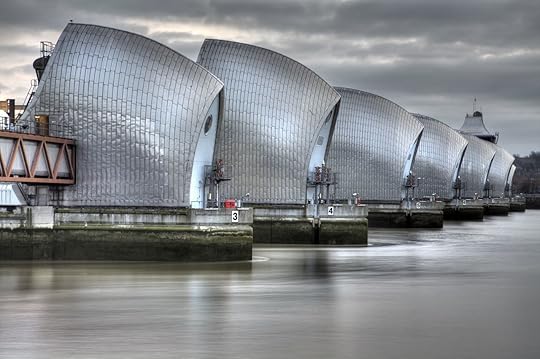
Photo: Marc Pinter/Shutterstock
London can’t blame its sinkage on skyscrapers or faulty infrastructure. It’s actually the result of the last ice age and a phenomenon called “glacial isostatic adjustment.” According to Kramer, London’s sinking is caused by “the weight of the glaciers pressing down on Scotland 11,000 years ago. These depressed the north and allowed the south of the UK to relatively soar.” Since the UK’s glaciers have since melted, however, Scotland is now rising — at .04 inches per year — while the south of the UK is sinking back into the sea. Although the metallic gates of the Thames Barrier were designed by engineers to protect London against flooding, they were only expected to be needed a maximum of three times per year. Currently, they’re being used six or seven times per year.
3. Dhaka

Photo: Sk Hasan Ali/Shutterstock
The capital of Bangladesh is sinking at a rate of a half-inch per year. While this may not put Dhaka in as dire straits as Jakarta, the sea level in the Bay of Bengal is rising 10 times faster than the global average. Millions in the city’s coastal areas have already fled, migrating to Dhaka’s overcrowded slums. Like Jakarta, the situation is being exacerbated by groundwater extraction at an unsustainable rate, as well as shifting tectonic plates. To solve the groundwater problem, officials have endeavored to improve the city’s water infrastructure though it’s unclear whether these efforts will be enough.
4. Bangkok

Photo: Artistpix/Shutterstock
Bangkok finds itself in a precarious position. Currently sitting just five feet above sea level, and sinking at a rate of one inch per year, the city is projected to be submerged by 2030 unless drastic measures are taken. Bangkok does not suffer from the same groundwater issues as Jakarta and Dhaka, but its towering skyscrapers are, however, causing the ground to cave in on itself. “Bangkok’s sinking feeling has ironically been made worse by its reaching for the skies,” Kramer writes. “The sheer weight of its buildings are pressing into the riparian sediments and compacting them as the sustaining water is depleted from them.” Thailand’s National Reform Council has recommended building a huge seawall around the entire city to help curb the problem.
5. New Orleans
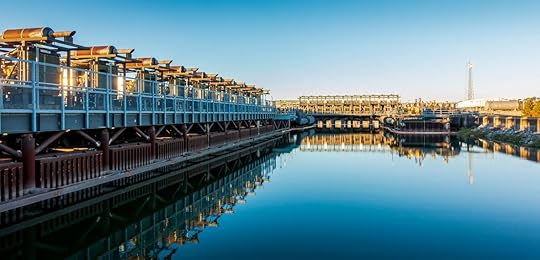
Photo: Victor Wong/Shutterstock
According to a 2016 NASA study, New Orleans is projected to see 14.5 inches of sea level rise by 2040. That’s one of the highest in the world. NASA’s maps show parts of the city sinking at a rate of two inches per year, mostly areas near the Mississippi River and industrialized sectors like Norco and Michoud. Like other major cities, the rising water level is being caused by groundwater pumping; human withdrawal of water, oil, and gas; compacting of shallow sediments; and continued land movement from glaciers during the last glacial period. The danger to the region is so immediate that the government recently set aside a $48 million grant to move residents of Isle de Jean Charles — among Louisiana’s fastest-sinking communities — to drier land. 

More like this: Earth only has 12 years to curb global warming, according to UN report
The post These 5 major cities are sinking rapidly into the sea appeared first on Matador Network.

Coolest Art Deco buildings in Miami

Art Deco style may have debuted in Paris, but its migration to Miami during the 1930s means that Florida’s seaside hotspot is now home to one of the world’s largest and most well-preserved collections of Art Deco architecture.
Miami’s take on Art Deco (dubbed “Tropical Art Deco”) maintains the style’s signature devotion to straight lines and its geometric interpretation of nature but incorporates its own flair through the use of nautical elements and colorful pastels.
There are more than 800 Art Deco buildings in the city, but because checking all of them out would require you to explore Miami’s every nook and cranny, we selected 11 of them for you to get a start on the city’s emblematic architectural style. We also suggest that you enjoy the candy-colored painted exteriors by day, and go again when the sun’s set because many of the Art Deco hotels along Ocean Drive glow with bright lights — a sight that will transport you right back to the golden age of neon.
1. The McAlpin (1424 Ocean Drive)

Photo: Mia2you/Shutterstock
Symmetrical and perfectly pastel, the McAlpin is one of the best examples of Art Deco architecture in Miami. It was designed in 1940 by Lawrence Murray Dixon and even today is one of the most popular (and most photographed) buildings on the South Beach stretch. The hotel, now owned by Hilton, remains open for reservations for the ultimate Miami Beach stay.
2. The Clevelander (1020 Ocean Drive)
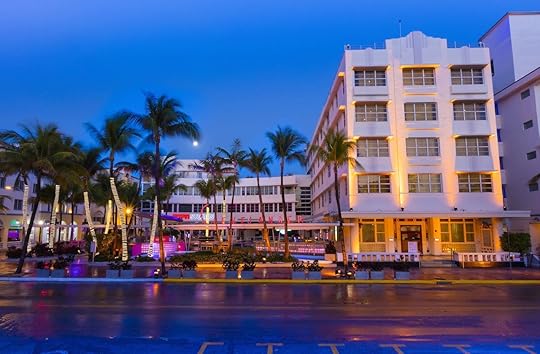
Photo: Clevelander
A nightlife hotspot, hotel, and icon of South Beach, the Clevelander was built in 1938 by famous architect Albert Anis. Today, some of the best partying in the city can be found at this historic spot; the Clevelander has a nightly schedule of live entertainment on the outdoor poolside patio, including live DJs, fire shows, and go-go dancers. Things may get a little wild, and you have to be 21 to even be allowed to stay at the hotel.
3. The Breakwater Hotel (940 Ocean Drive)
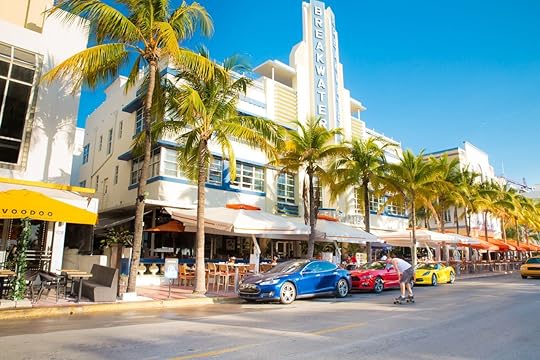
Photo: littlenySTOCK/Shutterstock
Colorful and covered in neon, the Breakwater Hotel is a perfect example of the nautically-inspired touches of Art Deco that are unique to Miami. It resembles a ship setting sail into the Atlantic Ocean that it faces. Amenities available to guests of the Breakwater Hotel’s 99 rooms include a sidewalk cafe, rooftop bar, and glass-sided aquarium-style swimming pool.
4. The Webster (1220 Collins Avenue)
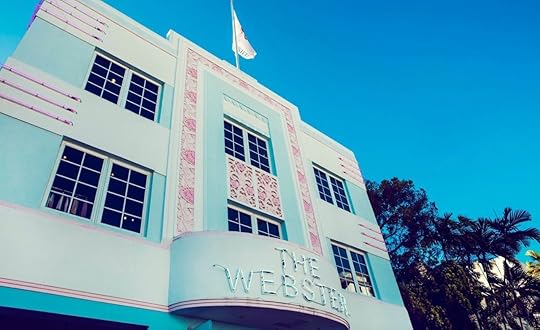
Photo: The Webster
Dating back to 1939, The Webster perfectly captures the spirit of Miami with its straight lines, ornate carvings, and neon accents. Its design was conceived in the mind of famous architect Henry Hohauser. Formerly a hotel, today it remains in business as a high-end, multi-brand fashion boutique. The building is three stories tall and even has a rooftop deck for visitors to enjoy.
5. Waldorf Towers Hotel (860 Ocean Drive)
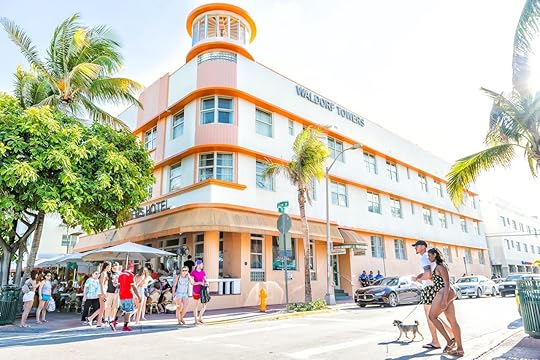
Photo: Andriy Blokhin/Shutterstock
Clad in bright orange and topped with a pillared cupola, the Waldorf Towers Hotel is a real looker. Now under the Room Mate Hotels umbrella, the Waldorf Towers Hotel has been completely renovated but still holds to the original design by Albert Anis — and, most importantly, still overlooks the Atlantic on the world-famous Ocean Drive.
6. The Carlyle (1250 Ocean Drive)
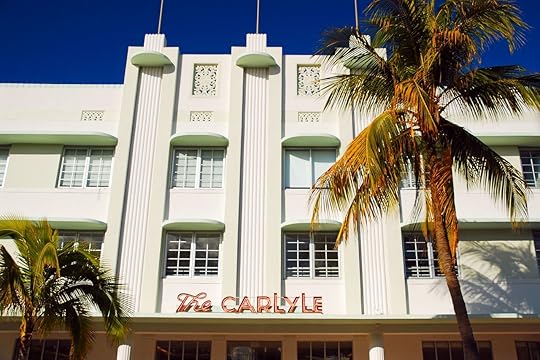
Photo: James Kirkikis/Shutterstock
The Carlyle stands out amidst the South Beach skyline with its soft white and seafoam green coloring. The building dates back to 1941, when it opened as a hotel. If you’re lucky, you may still get the chance to spend a night at the Carlyle; today, it stands as both a hotel and residential condos.
7. Jerry’s Famous Deli (1450 Collins Avenue)
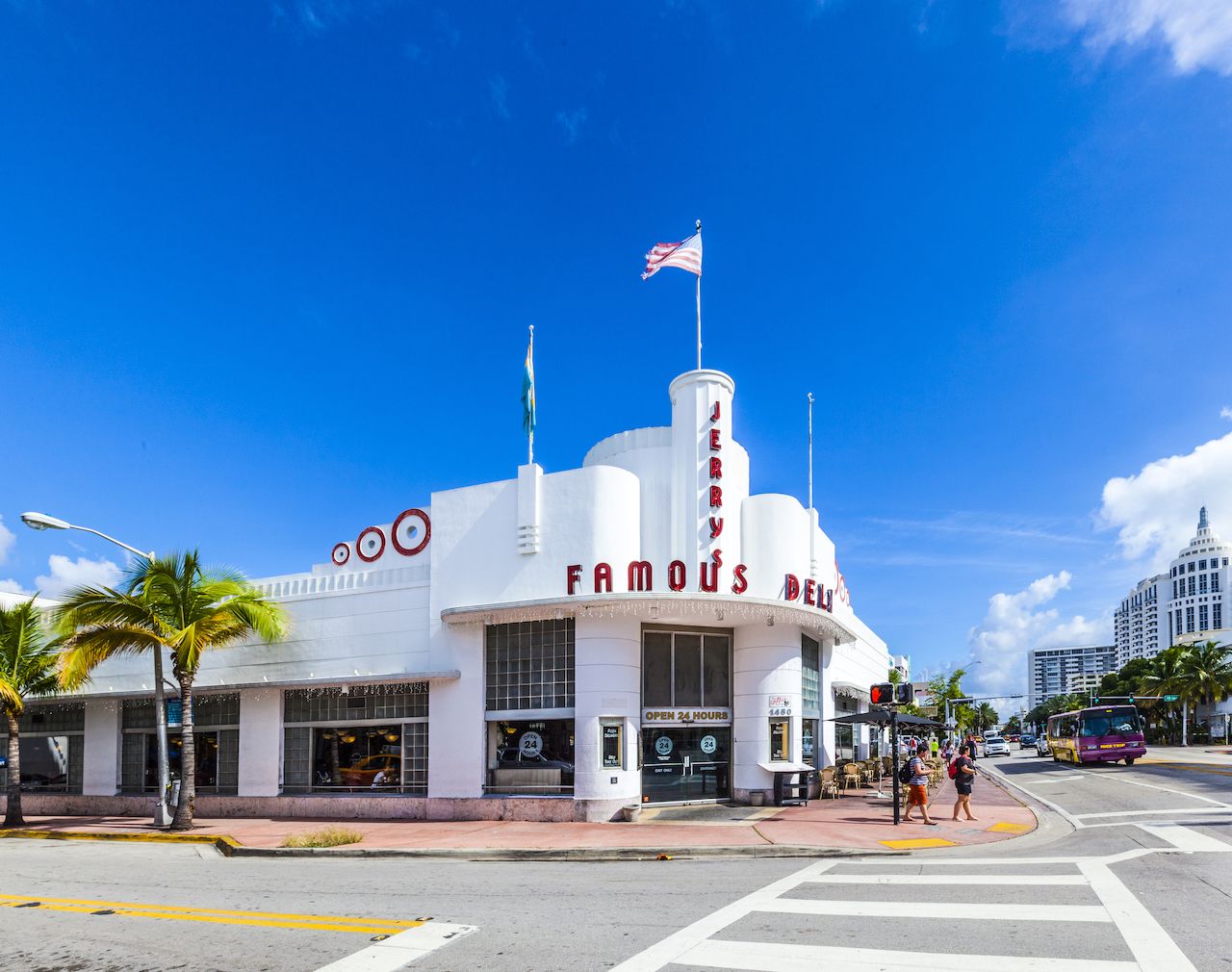
Photo: travelview/Shutterstock
Another design by Henry Hohauser, the old Jerry’s Famous Deli is nautical and eye-catching. Though it opened in 1939 as a cafeteria, it has since been a home for clubs, a bar, and a ballroom before transforming back into an eatery in the form of Jerry’s Famous Deli. In 2014, the building permanently closed again and currently lies in wait for a tenant that will breathe new life into the historic spot.
8. Colony Theatre (1040 Lincoln Road)
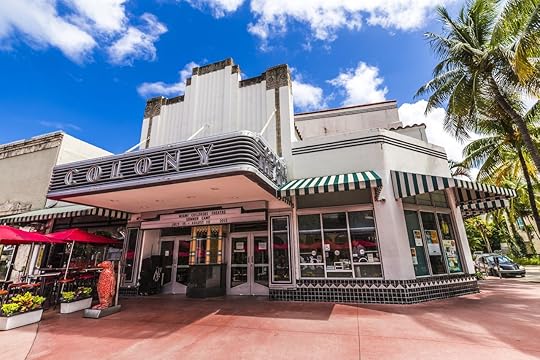
Photo: travelview/Shutterstock
The Colony Theatre opened in 1935 as a movie house for Paramount Pictures and continues to entertain patrons to this day, though now it presents performing arts and live acts such as concerts, comedies, and operas rather than movies. From the terrazzo floors to the ticket box, the Colony Theatre has undergone renovations to preserve its Art Deco design through the ages.
9. Cadillac Hotel (3925 Collins Avenue)

Photo: Cadillac Hotel & Beach Club, Autograph Collection/Facebook
Constructed to resemble a car, the oceanfront Cadillac Hotel features chrome trim, soft colors, and even a hood ornament. Built in 1940, the building was designed by Roy France and remains open to hotel guests to this day, though it has since been purchased by Marriott as an addition to its Autograph Collection line of distinguished hotels. Marriott made some changes to the design, but kept the overall Art Deco look of the building.
10. The Colony Hotel (736 Ocean Drive)

Photo: travelview/Shutterstock
Captivating during the day, the Colony Hotel truly comes alive — bedecked in glowing neon colors — at night. Illuminated in electric blues and bright purples, the Colony Hotel stands like a beacon in the night. “Recognized around the world as the undisputed symbol of South Beach,” according to the hotel’s website, “the Colony Hotel in Miami Beach has set the standard for hospitality and style since 1935.” Best of all, the interiors have been maintained to complement the building’s Art Deco exterior.
11. Delano South Beach (1685 Collins Avenue)
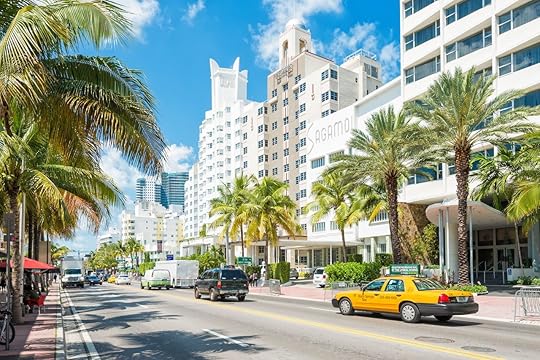
Photo: Kamira/Shutterstock
Upon first glance at the Delano South Beach, you’d never guess the building was originally constructed to serve as military housing. At the time — the building was constructed in 1947 — the four-winged tower was the tallest building in Miami. Today, celebrities rather than soldiers flock to the Delano, now a part of the Morgans Hotel Group, for a little rest and relaxation. Fun fact: The hotel is named in honor of US President Franklin D. Roosevelt. 

More like this: The ultimate art and culture guide to Miami
The post The 11 coolest Art Deco buildings in Miami appeared first on Matador Network.

‘I amsterdam’ sign removed
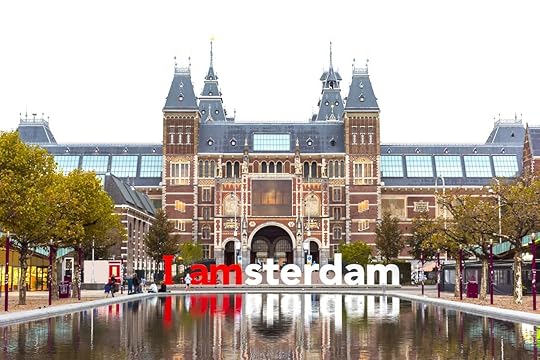
If you’re a selfie-obsessed traveler, you might want to scratch Amsterdam of your to-visit list. The famous red and white “I amsterdam” sign in front of Museum Square’s Rijksmuseum, and one of the city’s most recognizable landmarks, has been removed.
The I amsterdam letters are on the move! They’ve been removed from Museumplein at the request of @AmsterdamNL, but you can still find them @Schiphol, as well as at festivals and events across the #AmsterdamArea. Read more: https://t.co/ydjvheHCMd (
Free entry to US national parks

If your 2019 resolutions include visiting more US national parks, get your planner out. The National Park Service just announced its entry-free dates for the upcoming year.
There are five days in total, during which all of the country’s 418 national parks can be visited at no cost. The waiver only applies to entry fees, and not to other associated park or activity fees such as camping, boating, transportation, or tours. Here are the five entry-free days for 2019:
January 21st, 2019 (Martin Luther King Jr. Day)
April 20th, 2019 (the first day of National Park Week)
August 25th, 2019 (the National Park Service’s birthday)
September 28th, 2019 (National Public Lands Day)
November 11th, 2019 (Veterans Day)
It’s worth noting that admission to most national parks is free all year round — only 115 parks charge entrance fees, including Grand Canyon National Park, Joshua Tree National Park, and Hawaii Volcanoes National Park. You can also buy the America the Beautiful Pass for $80, which provides unlimited entrance to over 2,000 federal recreation areas. 
H/T: REI Co-Op

More like this: 5 underrated alternatives to America’s busiest national parks
The post National parks will be completely free on these five days in 2019 appeared first on Matador Network.

Tinder’s data on dating trends

People around the world have different preferences when it comes to dating. Australian men like their partner to respect their love of sports, for example, and Californians love their hiking dates. Tinder, with all its swipe-filled data, is taking note of those differences we all have and sharing them with the world in what it’s calling the Year in Swipe.
The data encompasses profiles from 11 countries: the US, the UK, Australia, Brazil, France, Germany, India, Japan, Korea, Russia, and Spain. From the top song in people’s profile (Drake’s “In My Feelings” was number one no matter the country) to the most used GIFs (“How you doin’?”), it turns out how we Tinder says a lot about our similarities — and our differences.
Even if you’re not a Tinder user, the data gives some interesting insight into how different cultures find love.
Most of the dating world loves to travel.
Travel is a big thing for the dating world. Travel, or traveling, is the most popular term in people’s bio in Australia, France, Germany, Spain, and the UK. It’s the second most popular term in Brazil (after “bar”) and the US (after the ever ambiguous “fun”). Travel fell to the fourth most popular bio term in Korea and Russia. The only two countries where travel didn’t make the top 10 most used bio words was in Japan and India.

Photo: Tinder

Photo: Tinder
Wine, beer, and pizza are universal signifiers of love.
Wine and beer were the most popular foods mentioned in bios from just about every country Tinder released data for. In Australia, wine and beer are the two most popular foods listed in bios (rosé and Aperol spritz make it in at 10th and 11th most popular). This being 2018, people are largely expressing their preferences via emoji. Russia and the UK are the only countries where wine or beer aren’t in the top 10 most popular emojis used in bios. Beer also didn’t make a top 10 appearance in Germany, one of the countries most associated with the beverage. But when you’re in the country that started Oktoberfest, beer is a bit of a given.

Photo: Tinder
Monday is a good day to find a mate no matter where you are.
Monday was the most popular day to use Tinder in eight of the 11 countries the app has data for. The three places where another day is most popular are Japan (where Sunday is the most popular day), India (Tuesday), and Brazil (Tuesday). All of the days are early in the week, which goes to show that if you want a weekend partner, you have to start early. 

Photo: Tinder

Photo: Tinder

More like this: How to use Tinder as your personal concierge abroad
The post Data from Tinder shows the world dates differently, but everyone likes beer appeared first on Matador Network.

Rites of passage in Arizona

Rites of passage usually involve a ceremony after a sacrifice of some sort, and Arizonans’ rites of passage are no different. In fact, ours might seem a little extreme — this is a rough-and-tumble kind of state! Here are seven rites of passage we all have to go through in order to make it as a full-fledged Arizonan.
1. Your first rodeo
Whether you’re roping, riding, or just ringside, all Arizonans have to go to the rodeo. You might sympathize with the angry bull, the cowboys and girls who wrangle them, or the clown. Regardless, once you’ve gone to your first one, you earn the right to say, “This ain’t my first rodeo.”
2. Venomous bites
Not every Arizonan is going to get bitten by a snake, much less a venomous rattler. But all Arizonans who have been here long enough have witnessed a person being bitten, or heard scary stories about killer diamondbacks. And we’ve all had unwanted contact with a scorpion or four — that’s how you learn.
3. Frightful sunburns
As Arizonan children, we were slathered with sunscreen. We played in the sun 300 days a year. But in our early teens, SPF 50 became uncool and we stopped using it, resulting in the inevitable sunburn from hell that we deserved. Those of us who don’t learn from this are destined for facial wrinkles and melanoma.
4. Tequila hangovers
There are hangovers, and then there are Arizonan hangovers. This rite of passage usually occurs on the evening of one’s 21st birthday after downing way too many tequila shots (and maybe having to eat the worm). Unfortunately, we seldom learn from this and often have to go through it again and again to learn our lesson.
5. Parallel parking lessons
Every Arizonan who has passed their driving license practical had to learn how to parallel park. However, everyone knows that there are very few places where we have to parallel park in the state. It would be much more useful to have to demonstrate our four-wheel-drive capabilities.
6. A broken air conditioner
Usually on the hottest day of summer, the air conditioning will fail. Whether it’s in the house or the car, it’ll leave you sweating and cursing. Surviving through this extreme torture is yet another rite of passage that just serves to toughen us up, and perhaps teach us to change the filter once in a while.
7. Dodging bullets
Dodging a drunk person’s bullets that they shoot off at a desert party is a quintessential Arizona experience. Talking down the wasted NRA guy in the chaps as they spray their .45 everywhere is one of the more dangerous Arizonan rites of passage, but it’s the mark of a true desert dweller. 

More like this: 7 things you’ll never hear an Arizonan say
The post 7 rites of passage all Arizonans go through appeared first on Matador Network.

Budweiser Clydesdales in NYC today

In April of 1933, August A. Busch, the owner of the Anheuser-Busch Brewery, received a gift from his two sons to celebrate the end of Prohibition: six Clydesdale horses and a wagon big enough to haul barrels of beer. Always an astute businessman, Busch saw the gift as a marketing opportunity. He ordered a second set of Clydesdales and sent them to New York City to gallop down the streets of Manhattan and deliver beer to former Governor Alfred E. Smith to thank him for his work in repealing the 18th Amendment. Thus, a symbol was born.
Today, the Clydesdales are a major part of the Budweiser brand, and to celebrate the 85th anniversary of the repeal of Prohibition, the horses are coming back to the streets of Manhattan. Budweiser and Jim Beam are partnering to deliver beer by horse to New York City bars on December 5th. Additionally, the brands are encouraging everyone to stop work for a national toast at 5:32 PM, which is the exact minute that the 21st Amendment repealing Prohibition was ratified.
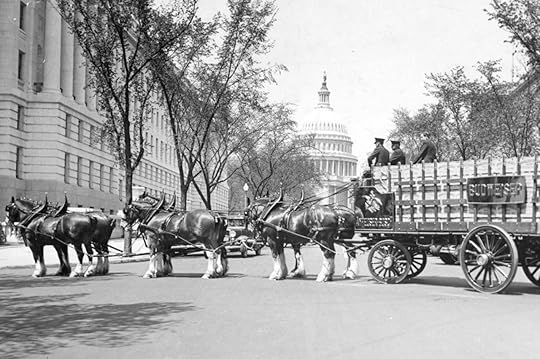
Photo: Budweiser
It’s not an exact replication of the first ride. For one thing, the 1933 tour was started to celebrate the Cullen-Harrison Act, which legalized 3.2 percent ABV beer on April 7th. December 5th is the day that all of Prohibition was repealed, including liquor. But without that last part, Jim Beam wouldn’t be able to join in on the fun.
Earlier this year, Budweiser and Jim Beam partnered on a beer aged in barrels that used to hold whiskey. The horses are stopping to make deliveries at bars including Hog Pit, Grey Bar, Blacksmith, and Smithfield Hall — essentially, many of the bars in the Flatiron District of New York.
That’s not the only Repeal Day celebration going on. New York Distilling Company in Brooklyn is celebrating its seventh year of opening, and The Boogie Woogie Room is throwing a party with burlesque, Champagne fountains, and Redemption Rye cocktails. Outside of the city, Dutch Spirits, a distillery in the Hudson Valley, is reopening for the first time since 1932, when it was raided by the FBI and shut down.
This year, celebrate Repeal Day like it’s 1933. And if you can’t make it at that time, well, it’s 5:32 PM somewhere. 

More like this: 9 hardest to find speakeasies in New York City (and how to find them)
The post The Budweiser Clydesdales are parading through Manhattan with beer today appeared first on Matador Network.

December 4, 2018
Stalin's printing house in Tbilisi

A short subway ride from Liberty Square takes me straight into the heart of the Avlabari district, an area of Tbilisi’s old town that houses the modern, glass-domed Presidential Palace; the Holy Trinity Cathedral; and the shabby residential blocks where the Armenian community once lived. I’m here, on the eastern side of the Mtkvari River, head down, staring at my phone, hoping to finally understand the directions to an undistinguished house, below which, a young communist named Iosif Jugashvili is said to have printed propaganda material calling for the removal of Nicholas II, Russia’s last emperor.
I heard of Stalin’s secret printing house only a couple of days prior while traveling south on the Georgian Military Road from the Russian border town of Vladikavkaz. Looking for lesser-known attractions that would keep me entertained before moving on toward Azerbaijan, I came across a series of online comments that seemed to provide clear instructions on how to indulge my Soviet curiosity. Hiding below a seemingly anonymous brick house just outside the city center was a century-old machine responsible for heightening the rebellious spirit of the Russian proletarians.
As I walk in circles, a passerby notices my confusion and offers to help. “Stalin?” I ask, making a hand gesture that conveys that I’m looking for something that is located underground. He laughs and points me around the corner. A hammer and sickle painted on a red circle mark the door of what I soon discover used to be the headquarters of the Georgian Communist Party.
Iosif Jugashvili, better known as Joseph Stalin, grew up in Gori, a town located two hours west of the capital of Georgia, and moved to Tiflis at the age of 16 to study at the Orthodox Spiritual Seminary, but his ecclesiastical career was short-lived. In the span of a decade, Stalin’s life shifted dramatically. He entered adolescence with the prospect of becoming a priest and exited an atheist, organizer of factory-worker strikes, bank robber, and clandestine publisher of leaflets, manifestos, and papers meant to convert the whole of the South Caucasus to the new subversive doctrine.

Photo: Angelo Zinna
“Excuse me, is this the printing house?” I ask as I enter the room, interrupting a group of men chatting in front of a heavy red velvet curtain. “Follow the lady, she’s just started,” I hear one of them saying in English before turning back to his comrades. “The lady” is a Russian-speaking member of the party who volunteers to guide the few visitors showing up here. Behind her, a Chinese man and his Georgian translator compose the entirety of the tour group. We exit the building to find ourselves in a lush courtyard in front of a run-down house covered by a wooden roof that seems about to collapse. “Two ladies lived in this house until 1906. They would sit on the porch knitting, day in day out,” explains the guide with a subtle smile. “They had only one job: If they saw someone coming too close, they had to push a button once; they pushed it again to signal a false alarm. If they pushed it three times, it meant it was time to hide!”
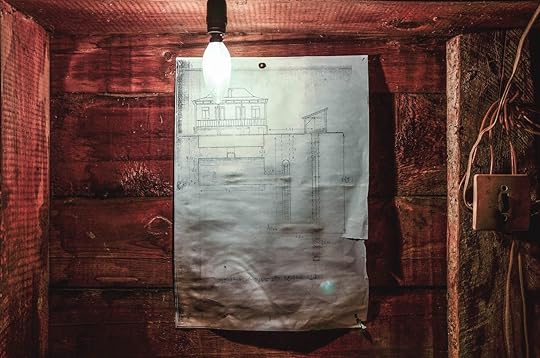
Photo: Angelo Zinna
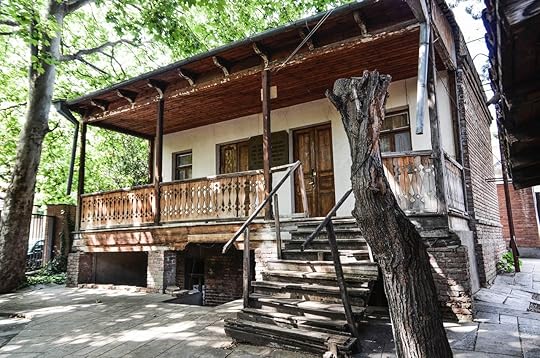
Photo: Angelo Zinna
The bell employed to signal the arrival of the police was connected to a room built 15 meters underground where the 1893 German printing press was located. After obtaining authorization from the landlord, a printing press was smuggled into Tbilisi from Baku, Azerbaijan, then dismantled, lowered beneath the ground piece by piece, and reassembled inside the cellar, which became a printing house in 1903. To access the room, the Bolsheviks had to climb down a well and enter a lateral passage dug up in the wall leading to the secret chamber. Thousands of pamphlets were printed illegally in Russian, Georgian, and Armenian and distributed to spread revolutionary ideas throughout the region.
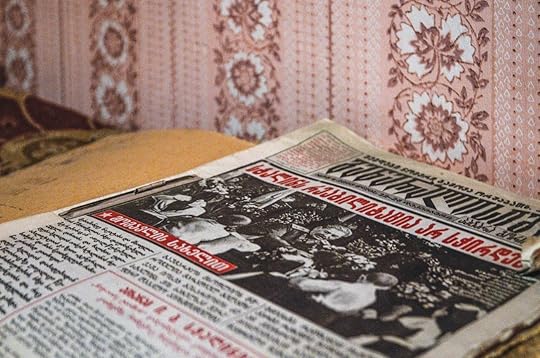
Photo: Angelo Zinna
Stalin had then abandoned the Seminary and was becoming an important figure in the revolutionary movement, thanks to both his unusual money-raising methods and the large workers’ demonstrations he succeeded in organizing. He was arrested in 1902 and, a few months later, deported to Eastern Siberia to serve a three-year sentence. After a first failed attempt to escape, Stalin managed to return to Tiflis and began working at the printing house in 1904, supported by his allies of the Bolshevik movement.
“This is where Iosif used to rest at the end of his shift,” I am told as we visit one of the rooms above ground. In one of the corners of the plain house, there is a single bed protected by a red cord and piles of books are towering up on the window sills. Old newspapers reporting Stalin’s rise to power lie around on shelves and furniture while posters and cutouts hang from the walls, decorating a space that looks more like a shrine than a museum. “We know he has done many bad things,” explains the party representative. “Mistakes were made, we don’t deny it. Politically though, Stalin was a genius. What happened here changed the world. This is history.”
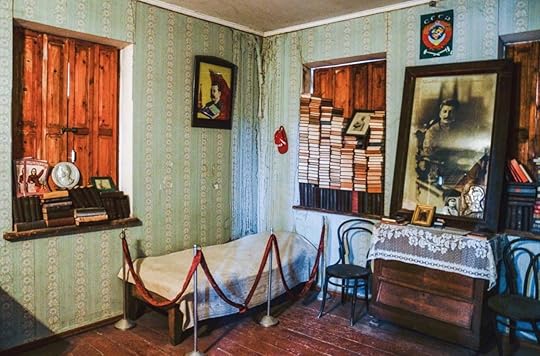
Photo: Angelo Zinna
The printing house was discovered by accident in 1906 after the police, suspicious of the constant comings and goings at the house, decided to inspect the building. The printing house, with all its equipment and printed material destroyed, was locked down and left to rot for 31 years until Stalin became the leader of the USSR and decided to give it a second life by transforming the former clandestine workshop into a museum. With the German printing press restored and a metal spiral staircase built as an alternative entrance to the subterranean chamber, Stalin’s printing house became a popular destination for those interested in learning about the origins of the 1917 revolution. Entering the dark, cool room containing the press now covered with a layer of rust is a surreal experience. A map lit by a hanging light bulb shows the original network of tunnels one had to navigate to reach the room and get working on the machine. In the ceiling, the original access point opens into a rectangular black hole.
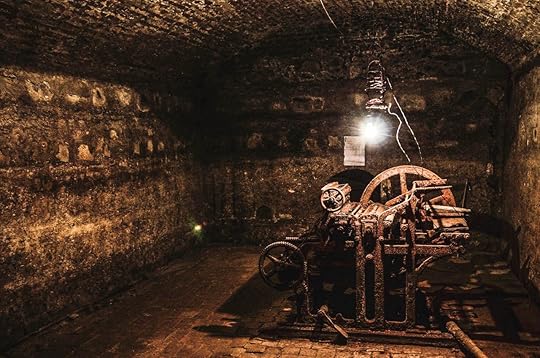
Photo: Angelo Zinna
With the fall of the Soviet Union began the decline of the museum, which is now under threat of being shut down permanently as part of the de-Sovietization process implemented after the Rose Revolution in 2003. “We are not allowed to call this place a museum. We are banned from doing any promotional activity, sell tickets, or apply for public funding. We’re happy to see visitors coming from words of mouth, but you should know that technically, we’re operating illegally. There’s an active trial going on,” explains Temur Pipia, one of the new leaders of the party. “We’ve been to court once and we will go again. The government wants to tear the building down and give permission to build a hotel. But this is history, we cannot allow it.”
Georgia’s Soviet history is slowly disappearing since the government decided to actively break away from its past and get closer to Europe, but the Georgians are still divided on the topic. In Gori, the six-meter-high statue of the dictator that had been standing in front of the town hall since 1952 was removed with the promise of being substituted with a monument to honor his victims, but Stalin’s birthplace and museum — a famous tourist attraction on which Gori’s economy relies — remains untouched.

Photo: Angelo Zinna
“Come, let me show you our office,” says Pipia noticing my interest. Two large red flags and framed portraits of Lenin and Stalin hang on the wall. An old telephone with a rotary dial sits at the center of the wooden desk, surrounded by newspapers and piles of documents. “This is where we try to keep things from falling apart,” he says laughing. 

More like this: 9 fascinating examples of Soviet-era architecture
The post Indulge your Soviet curiosity in Stalin’s secret printing house in Tbilisi, Georgia appeared first on Matador Network.

Matador Network's Blog
- Matador Network's profile
- 6 followers



